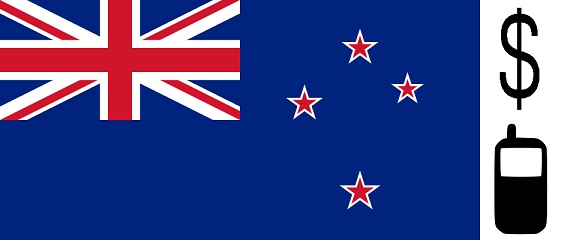The Commerce Commission keeps tabs on pricing in wake of Vodafone deal
The Commerce Commission, an age ncy of the New Zealand government, has mobilized to keep tabs on pricing for calls between fixed line platforms and mobile phones. The move comes in the wake of a deal between Vodafone New Zealand and TelstraClear, in which Vodafone acquired the latter party. The Commerce Commission is poised to keep an eye on the pricing schemes coming from Vodafone, as well as other telecommunications companies operating in the country. The agency has already imposed lower prices on calls in several mobile networks.
ncy of the New Zealand government, has mobilized to keep tabs on pricing for calls between fixed line platforms and mobile phones. The move comes in the wake of a deal between Vodafone New Zealand and TelstraClear, in which Vodafone acquired the latter party. The Commerce Commission is poised to keep an eye on the pricing schemes coming from Vodafone, as well as other telecommunications companies operating in the country. The agency has already imposed lower prices on calls in several mobile networks.
Regulator preparing to keep track of mobile commerce
Though the regulator is poised to take action if it detects some form of foul-play in terms of call pricing, the Commerce Commission is also keeping an eye on the growth of mobile commerce within the country. Mobile devices are becoming more common with consumers. As such, more people are being exposed to the concept of mobile commerce, whereby their mobile device is used to make payments for goods and services.
Youth of mobile commerce industry holds potential for malicious activity
Typically, mobile commerce platforms do not make money off of the applications they provide to consumers. Instead, companies charge a fee for each transaction processed through t he platform. Because mobile commerce is still a relatively young industry, there is potential for some companies to exploit consumers. It is this potential for malicious activity that has the Commerce Commission on its toes and ready to crack down on foul-play it may see.
Vodafone may be gearing up to push mobile commerce in New Zealand
Vodafone New Zealand is one of the largest mobile network operators in the country and is part of the larger Vodafone network. Vodafone has shown interest in mobile commerce in countries like Spain, but seems to have limited this interest to the European market. With TelstraClear now a part of the Vodafone network, the company may be gearing up for a push to bring mobile commerce to New Zealand, but such plans have not yet been set in stone.
Is a mobile loyalty campaign right for every business…
Mobile loyalty programs are becoming increasingly popular among smartphone users, and retailers, restaurant owners, and other merchants are starting to recognize the size of the potential that they hold. However, all loyalty programs are not created equal over the mobile channel, so it is important to know how to evaluate one for its efficacy.
Use the following questions to help to decide whether or not a mobile loyalty campaign has the best chances of success:
• Is the program t ransactional? Even though it is being used through a new technology and channel, the basic rules of loyalty programs remain the same. If it has been properly designed, then it should provide customers with rewards based on their purchases on an individual transaction basis.
ransactional? Even though it is being used through a new technology and channel, the basic rules of loyalty programs remain the same. If it has been properly designed, then it should provide customers with rewards based on their purchases on an individual transaction basis.
• Is there compatibility between the plug-and-play and the current POS environment? In order to for it to work properly, this solution has to be able to send the transactional data directly from the POS at the time of the sale, in real time, or following the purchase in batch processing reports.
• Does it provide adequate security? Though loyalty programs based on plastic cards are on their way out, what consumers do like about them – and what is causing them to cling to them – is the fact that they are highly secure both for reward redemption and throughout the accumulation of benefits.
• Has it been proven to work? This may be a new channel, but you want a program that has already proven itself to work and won’t put off customers with its complications, crashes, bugs, problems, and unpredictable results.
Mobile loyalty campaign best practices
Though mobile loyalty programs may still be in the emerging phase, professionals in the industry are already suggesting the best practices for their development and use in a campaign. There are some recommendations that professionals are making that will help to define whose campaigns, as a whole, will and will not become successful.
With the speed of today’s technology, the choices that are being made for loyalty programs must not only cater to today’s consumers and devices, but also the trends that are soon to arrive.
Mobile marketing experts are making these recommendations…
- It is vital to include the use of mobile devices in any loyalty program, and the transition into that space should begin now.
- Mobile loyalty programs must have a transaction-based element in order to ensure long-term viability.
- Choosing the ideal platform for transaction-based loyalty programs will require companies to examine the way in which that platform will be able to access the existing point of sale’s transactional data. The cost of achieving this goal must also be evaluated.
- Eventually, mobile loyalty using near field communication (NFC) technology will surpass and then replace all other mobile loyalty offerings that are currently available. The solution that is chosen today must be designed in a way that it will transition seamlessly into the use of NFC.
 ncy of the New Zealand government, has mobilized to keep tabs on pricing for calls between fixed line platforms and mobile phones. The move comes in the wake of a deal between Vodafone New Zealand and TelstraClear, in which Vodafone acquired the latter party. The Commerce Commission is poised to keep an eye on the pricing schemes coming from Vodafone, as well as other telecommunications companies operating in the country. The agency has already imposed lower prices on calls in several mobile networks.
ncy of the New Zealand government, has mobilized to keep tabs on pricing for calls between fixed line platforms and mobile phones. The move comes in the wake of a deal between Vodafone New Zealand and TelstraClear, in which Vodafone acquired the latter party. The Commerce Commission is poised to keep an eye on the pricing schemes coming from Vodafone, as well as other telecommunications companies operating in the country. The agency has already imposed lower prices on calls in several mobile networks.
 ransactional? Even though it is being used through a new technology and channel, the basic rules of loyalty programs remain the same. If it has been properly designed, then it should provide customers with rewards based on their purchases on an individual transaction basis.
ransactional? Even though it is being used through a new technology and channel, the basic rules of loyalty programs remain the same. If it has been properly designed, then it should provide customers with rewards based on their purchases on an individual transaction basis.